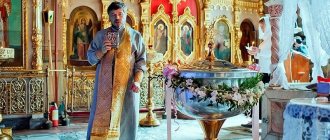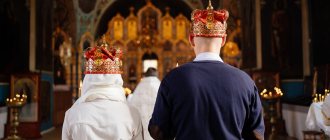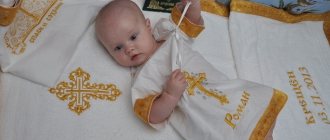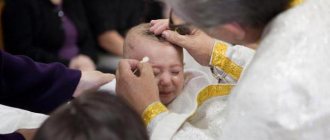In Dahl's dictionary
m. church. meeting of clergy and clergy; the entire church clergy; a meeting of clergy and singers. Come with all the clergy, the full cathedral. Clear, clear, related to the clergy, belonging. Clear records, track records of clears. A cleric is any clergyman or clergyman, sometimes of course only the clerics. Klirovschina collect clerics. Clerics, belongs to him. M. choir or converted into a wing, a place in the church for singers and | the most singers, during the service. Choir, related to the choir. Klirosnik, kliroshanin, Kryloshanin, cleric singing in the kliros, sexton. Kliroshanka monastery novice singing in the choir. Klirosnikov, kliroshanin, kliroshankin, belongs to him, to her. Choir, singing in the choir.
Clergy and clergy - what's the difference?
In Eastern Christianity, clergy are divided into senior and junior. The elders include the clergy. Through ordination (the sacrament of the priesthood, ordination at the altar) they receive special grace to perform the liturgy and sacraments. There are three degrees of priesthood: deacon, presbyter (priest, priest) and bishop (bishop). The last degree is the highest and is available only to monks.
Junior cleric - who is this? This is what clergy are called. In the Russian Orthodox Church these include subdeacons, readers and clerics. They are not representatives of the clergy, they cannot serve and perform the sacraments on their own, but they help the priests in this. Ordination to the clergy is called hirothesia. This is not a sacrament, but only a rite performed outside the altar in the temple. However, both consecration and consecration are performed by the bishop, with prayer and the laying of his hands on the head of the dedicatee. In a monastery, the ceremony can be performed by the abbot-priest (archimandrite or abbot).
So, inclusion in the clergy, as a rule, is made by the bishop. In this regard, bishops themselves are sometimes not classified as clergy. In the Russian Orthodox Church this issue is currently controversial.
II. Composition and structure of the Church
According to church laws, a monastery can only be founded with the consent of the ruling bishop, and it must be consecrated by him.
The monastery must be completely dependent on the bishop, subject to his supervision and court (4th rule of the Council of Chalcedon). A consecrated monastery cannot be converted into a secular dwelling. He is called to always serve godly purposes. The Fathers of the Double Council said in the 1st canon: “The creation of monasteries, a very important and praiseworthy work, wisely invented by our blessed and reverend fathers in ancient times, is now seen as being poorly carried out. For some, having given their estates and estates the name of a monastery and promising to dedicate them to God, describe themselves as the owners of the donated property. They cleverly plan to dedicate a single name to God, for they are not ashamed to assume for themselves the same power even after the donation, which they were not forbidden to have before. And such mischief was mixed into this matter that, to the surprise and chagrin of those who saw it, much of what was dedicated to God was clearly sold by the consecrators themselves. And not only do they not repent of the fact that they allow themselves to rule over what they once dedicated to God, but they also fearlessly pass it on to others. For this reason, the Holy Council determined: no one will be allowed to build a monastery without the knowledge and permission of the bishop; but with his knowledge and permission and with the performance of appropriate prayer, as it was anciently ordained by God, let the monastery be built; everything that belongs to him, together with himself, is entered into a book, which is kept in the bishop's archive. And a donor without the will of the bishop does not have the audacity to appoint himself or another as abbot in his place. For if someone cannot be the owner of what he has given to a person, then how can anyone be allowed to admire the possession of what he dedicates and brings to God?
The property of the monastery must, according to the canons, remain in the monastery forever. A number of rules threaten with grave penalties anyone who dares to damage the monastic property. Rule 24 of the IV Ecumenical Council reads: “Once consecrated monasteries, by the will of the bishop, remain monasteries forever; keep the things belonging to them, and henceforth not become worldly dwellings. Those who allow this to happen are subject to punishment according to the rules.”
This norm is repeated in the 49th rule of the VI Ecumenical Council. And in the 13th canon of the VII Ecumenical Council we read: “When, due to our sins, a disaster occurred in the churches, some holy churches, bishoprics and monasteries were plundered by certain people and became ordinary dwellings. If those who have taken possession of them want to give them back, so that they can be restored as before, then there is good and good; If not, then we command those who are from the priestly rank to be cast out, and monks or laymen to be excommunicated, as condemned from the Father, and the Son, and the Holy Spirit, and let them obey, even though the worm does not die, and the fire does not go out... Because they resist the voice of the Lord saying, “Thou shalt not make My Father’s house a house purchase.”
Zonara, in his interpretation of this rule, wrote about the circumstances that led to its publication: “During the iconoclastic heresy, many daring things were done against the Orthodox. And more than others, the priests and monks were persecuted, so much so that many of them left their churches and monasteries and fled. So, when churches and monasteries remained empty, some occupied them and appropriated them for themselves and turned them into secular dwellings.”
The general rule about the dependence of monasteries on diocesan bishops was “subjected to a particular change in the 17th century by the establishment of so-called stauropegial monasteries. Stavropegia (σταυρο πηγιον) was the name given to the erection of the cross at the founding of a famous monastery not by the local bishop, but by the Patriarch, as a result of which the monastery received independent management and did not depend on the diocesan bishop.”239.
In stavropegic monasteries, the name is exalted not of the local bishop, but of the Patriarch. The Patriarch, who governs such monasteries through his governors, has the right to supervise the management and life of the monastery, and the right to rule on the affairs of the brethren. As Bishop Nikodim noted, “every Patriarch could use the stauropegial right in all the dioceses of his region, and the Patriarch of Constantinople outside his region throughout the East”240. In Russia, during the Synodal era, monasteries that were under the direct jurisdiction of the Synod, and not local diocesan bishops, were called stauropegial. In the 19th century, seven monasteries in Russia were considered stauropegial: Novo-Spassky, Simonov, Donskoy and Zaikonospassky monasteries in Moscow, New Jerusalem in the Moscow diocese, Spaso-Yakovlevsky in Rostov the Great and Solovetsky in the north. After the restoration of the Patriarchate, stauropegic monasteries are under the direct authority of His Holiness the Patriarch, who appoints his governors to stauropegic men's monasteries. Women's stavropegic monasteries have their own abbess, but at the same time they are under the jurisdiction of the Patriarch as the ruling bishop, even if they are located on the territory of other dioceses.
Internal administration in monasteries is headed by the abbot, subordinate in everything to the diocesan bishop. Initially, the abbot of the monastery was called “Abba” (αββας), “father”. Subsequently, the abbots of large and especially important monasteries began to be called archimandrites (from αρχων (chief) της μαυδρας (cattle pen), meaning in this case a community of monks, like the flock of Christ). This name originally appeared in the Patriarchate of Antioch. In the 5th century it spread throughout the Greek East. The name of a certain Archimandrite Basil is mentioned in the acts of the Council of Ephesus (431). A number of archimandrites are mentioned by name in the acts of the Council of Constantinople in 448. This term was also used in the Henotikon of Emperor Zeno in 482. This was the name initially given to abbots, whom bishops appointed to oversee all the monasteries of the diocese. Then, after this responsibility began to be assigned to the great sacellarii, the title “archimandrite” became an honorary title for the abbots of the most important monasteries of the diocese. In the 5th – 6th centuries, archimandrites, as well as abbots, could be not only presbyters, but also monastic deacons and monks who did not have holy orders. Later, only presbyters could be appointed archimandrites. According to the 120th novel of the holy emperor Justinian, the bishop can appoint archimandrites. Since 1908, in the Patriarchate of Constantinople, the right to elevate archimandrites belongs exclusively to the Patriarch.
In the Russian Church, the title of archimandrite was first mentioned in 1174 in relation to the abbot of the Kiev Pechersk Monastery Polycarp, and he was called both archimandrite and abbot. Under 1226 the archimandrite of the Novgorod Yuryevsky Monastery is mentioned, under 1230 - the archimandrite of the Nativity Monastery in Vladimir-on-Klyazma, under 1261 - the archimandrite of the Epiphany Monastery in Rostov. It is likely that, as was the case in the Patriarchate of Constantinople, the rank of archimandrite in the Kyiv era could only be held by the abbot of one and the most important monastery of the diocese; subsequently, the abbots of other significant monasteries in the diocese could already be titled archimandrites. At the same time, the simultaneous naming of abbots abbots and archimandrites disappears from use.
After the division of monasteries into classes in 1764, the title of archimandrite was assigned to the abbots of first-class and second-class monasteries. The rank of archimandrite, even in the synodal era, was in almost all cases a designation of office. There were few titular archimandrites who were not at the same time abbots of monasteries, and, most often, these were abbots of large monasteries, the abbots and sacred archimandrites of which were bishops.
In modern times, most of our archimandrites are no longer abbots or governors of monasteries. Now this is no longer a position, but only a rank or title. The reason for this metamorphosis in the use of the term “archimandrite” can be considered both the universal tendency to transform the names of both state and church positions into honorary distinctions, ranks or titles, and the peculiarities of church life in our country during the era of persecution, when monasteries were closed everywhere, and then resumed in small numbers, so that some of them contained several archimandrites.
Due to the fact that in the synodal era, candidates for episcopal positions were exclusively archimandrites, we have developed a custom in cases where a non-archimandrite is elected bishop, to elevate him to the rank of archimandrite before episcopal consecration. The right to elevate archimandrites in the synodal era belonged to the Holy Synod, currently it belongs to the Holy Patriarch, in the Ukrainian Orthodox Church - to its primate, the Metropolitan of Kyiv.
In the Russian Orthodox Church now, in almost all cases, elevation to the rank of archimandrite is accompanied by an award - the right to perform divine services in a mitre. Therefore, in terms of seniority, archimandrites are on the same level as mitred archpriests, unless they are abbots or governors of monasteries, the property of which, in addition to the miter, is also a staff.
In ancient times, the abbots of less significant monasteries were called abbots (ηγομενος). In Russia, according to the monastic states of 1764, the title of abbot belonged to the abbots of third-class monasteries. The abbess of women's monasteries are called abbess; in the East the name αρχιμανδριτις has also been preserved. Nowadays, as a rule, abbots, like archimandrites, are neither abbots nor even governors of monasteries. Currently, this is not a position, but a rank or title.
As long as archimandrites and abbots were abbots of monasteries, their rights were the same. According to the “Charter” of Basil the Great and the 123rd novel (Chapter 34) of Justinian, included in the “Nomocanon”, the brethren elect a rector from among themselves, but if there is no suitable person among the brethren, then the diocesan bishop appoints him. However, the candidacy of the rector elected by the brethren is approved by the diocesan bishop or Patriarch (in stavropegic monasteries). In Russia during the synodal era, the following order was adopted: the abbots of cenobitic monasteries were elected by the brethren and approved by the Holy Synod on the proposal of the diocesan bishop, and the abbots of non-communal monasteries, the so-called staff ones, were directly appointed by the diocesan bishop or the Synod (in stauropegial monasteries). The rector was elected not by age, but by ability and merit. The main concern of the abbot is to take care of the spiritual well-being of the brethren and the property at the disposal or ownership of the monastery.
As the 3rd canon of the Double Council says: “If the abbot of a monastery does not seek out the monks subordinate to him who are running away with great diligence, or, having found them, does not accept and take the trouble to restore and strengthen the fallen one in a manner appropriate to the ailment, the Holy Council determined that he should be excommunicated from the Sacraments . For if he who has dumb living creatures in his sight neglects the flock, he is not left without punishment, then he who has assumed pastoral authority over the flock of Christ, and with his negligence and laziness squanders their salvation, how will he not be punished for his insolence? A monk who is called to return, if he does not obey, will be excommunicated by the bishop.”
The duties of the abbot include monitoring the strict fulfillment of monastic vows and rules by the brethren, taking care of the regular and orderly performance of divine services, and supervising the monastery's economy. Without abusing power, the rector must teach the brethren by the example of his life and his pastoral word. The abbot should visit the cells of the monks and see whether the brethren live according to the rules, and make sure that none of the brethren leaves the monastery without his knowledge. But the abbot should not undertake anything important concerning life in the monastery without consulting with the brethren. At the appropriate time, the abbot of the monastery submits a report to the diocesan bishop or Patriarch on the behavior of the monks, monastic life and monastic management. The duties of the abbot also include his special rights. All the monastic brethren must obey him and honor him as a father. No one dares to contradict him. To correct careless and guilty monks and novices, the abbot can impose punishments on them. In everything, the abbot has primacy in the monastery.
Under his leadership and depending on him, officials are appointed in monasteries who are responsible for certain aspects of the life of the monastery: a viceroy, who runs the monastery with the blessing of the abbot and within the limits specified by the abbot himself; the confessor, who is entrusted with the spiritual care of the brethren, the duty of confessing the monks; the dean, who is primarily responsible for order and discipline in the monastery; a housekeeper who helps the abbot and viceroy in managing the monastery's economy. All these persons, led by the abbot, form a spiritual council, which discusses and decides the most important monastic affairs. Among the officials of the monasteries, mention should also be made of the treasurer, sacristan, and cellarer.
Church services in monastery churches are performed in turn by the hieromonks and hierodeacons of the monastery.
During the synodal period, the monasteries of the diocese were headed by monastic deans, acting under the authority of the diocesan bishop. In some dioceses there were several monastic dean districts.
Monasteries had a huge impact on the life of the Orthodox Church. In an era of dogmatic disputes, the monks did a lot to ensure that Orthodox Christians turned to monasteries for support. During the time of iconoclasm, the monks had to bear the brunt of the struggle for icon veneration. For this they were subjected to severe persecution. At the Iconoclastic Council of 754, only three bishops were condemned by heretics for venerating icons. This means that almost all the other eastern hierarchs joined the iconoclasts. Meanwhile, the monks continued to defend the veneration of icons. The VII Ecumenical Council, at which the dogma on the veneration of icons was formulated, honored the merits of the monks in defending Orthodoxy in a special way: the monks cast votes at the Council together with the bishops. The conciliar acts bear the signatures of 130 monks.
In the 10th century, Mount Athos became the center of monastic asceticism in the East. The structure of life that took shape there in the 10th century, under St. Athanasius, remains unchanged today without significant changes. The Athos monasteries are now located on the territory of Greece, but have broad autonomy in the Greek state. As at the very beginning of its history, Athos is under the jurisdiction of the Patriarchate of Constantinople. However, the monasteries of the Holy Mountain have fairly broad independence from their First Hierarch.
The inhabitants of the Athos monasteries belong to different nationalities: both in ancient times and now the Greeks predominate there; in the 19th century, the majority of monks were immigrants from Russia. Arab, Serbian, Bulgarian, and Romanian monks also labor on the Holy Mountain. Twenty Svyatogorsk monasteries, together with the monasteries and cells dependent on them, form a kind of monastic republic. The Holy Mountain is governed by a kinot - a general meeting of twenty representatives from the monasteries, headed by a protos. The General Assembly, as the first instance, considers disputes between monasteries and monasteries. Appeals are submitted to the Patriarch of Constantinople. Among the Athonite monasteries there are cenobitic monasteries (cines) and special monasteries (idiorhythmic).
Who is this in the Orthodox Church?
This term originates from the Greek word “kliros”, which translates as “lot”. In the ancient world, this word was used to describe an object for drawing lots - multi-colored beans, pebbles, and other objects.
They were placed in a closed vessel, mixed and removed by a child or an old man known for an immaculate life. Usually white and black objects were used, and white meant acceptance and black meant rejection.
Useful materials
In this way, candidates for important public or church positions were selected. The second meaning of this word was the possession of an inheritance, and it was the spiritual inheritance that was understood. So gradually the clergy itself began to be called this word.
Activities of clerics
Photo: Tikhonram.ru
Clerics typically perform the following actions:
- activities with children;
- charity.
- fulfillment of instructions, church services and sacraments;
- reading sermons;
- reading the Holy Scriptures (Apostle, Proverbs, etc.) during services;
What are the responsibilities of clergy?
All clergy, regardless of their rank, are required to adhere to certain common rules and norms of behavior and moral and ethical principles based on Orthodox rules.
Orthodoxy provides a list of prohibitions, the violation of which can become an indelible stain on the reputation of a clergyman:
- Christ also expelled all merchants from the Temple. And today, clergy are strictly prohibited from engaging in entrepreneurial activities.
- It is unacceptable for clergy to gamble.
- A clergyman is not allowed to serve in the Army.
- It is not appropriate for a minister of the Church to work in government agencies.
- A cleric has no right to shed the blood of a person or animal. The activities of a doctor, especially a surgeon, as well as veterinary practice are inaccessible to him. The same ban applies to hunting.
- A spiritual person of any rank should serve as an example to follow. A clergyman is obliged to keep his soul and body pure, help his neighbors and show mercy.
In general, a person who becomes a cleric takes on a heavy burden - he strives to become closer to the Almighty. And therefore, the choice to serve God must be made only after carefully weighing all the pros and cons. If a person does not have faith and does not have the desire to gain and strengthen it in the future, he should not take the path of a clergyman.
The question of who a cleric is needs to be explained even to children. If a child understands at least in general terms the structure of the church hierarchy and the Temple, he will be much more interested, and he will show much more respect for the priests.
History of the clergy
The word “clergy” is translated from Greek as “lot” and implies a destiny determined for a person from above. Serving God is called a lot in the Holy Scriptures (Acts 1:17-25). It is the Lord who selects special people from among believers to serve Him. In Old Testament times these were prophets, anointed kings, priests and Levites. In the New Testament - apostles, deacons, presbyters, bishops:
“You did not choose Me, but I chose you and appointed you, that you should go and bear fruit...” (John 15:16).
In traditional Christianity (Orthodox and Catholics), representatives of the clergy are considered participants in the apostolic succession with its gracious gifts of the Holy Spirit. The disciples of Christ transferred this greatest spiritual authority to the bishops. The bishops, in the work of serving God, took presbyters and deacons as assistants. Those, in turn, are helped by clergy. Together they give Christians the opportunity to participate in the sacraments and connect with God.
Thus, the clergy is a special category of church members. These are consecrated people, called to church service by the Holy Spirit and endowed with special grace for this purpose. Therefore, other believers cannot perform their functions. However, the laity are also participants in church life. They pray at services, preach the faith of Christ outside the church, and participate in church governance.
In Protestantism, the doctrine of apostolic succession is absent; it is replaced by the concept of a “universal priesthood.” Protestants believe that every Christian is already ordained to the priesthood at Baptism. Accordingly, he does not need “additional” grace for church service. Ordination in Protestant Churches (with the exception of the Anglican Church) is not a sacrament, but only a rite of calling a believer to the ministry of public preaching. Thus, in Protestantism there is no significant difference between a layman and a priest (pastor).










